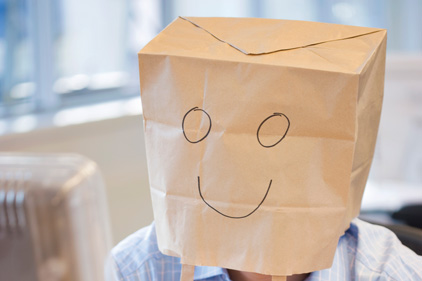Perhaps it’s publishing’s attempt to beat back the winter blues.
Or maybe after four years of economic gloom, it’s time to get bullish again. Time’s cover says Warrant Buffett is bullish on America. (And you should be, too?)
After all, fewer Americans were “thriving” in 2011 than in 2010, while slightly more were “struggling” and “suffering,” based on how individuals rate their own lives, according to a Gallup poll.
The ladder of life
Gallup uses the Cantril Self-Anchoring Striving Scale to classify how Americans feel about their station in life. Try it out yourself: Imagine a ladder with steps numbered from zero at the bottom to 10 at the top. The top of the ladder represents the best possible life for you and the bottom rung represents the worst possible. At this time, where do you stand? On which rung of the ladder of life, so to speak?
Next, where do you think you will be on the ladder about five years from now?
Slightly more than half of Americans (52.5%) turned out to be “thriving,” last year; 43.8% were “struggling” and 3.7% were “suffering.”
It’s clear from the results that, as we already know, few Americans are Buddhists. Buddhists believe life is suffering.
Definitions
But what does it mean to be “thriving” or “struggling”? Well, look at your own workforce. If your employees report significantly fewer health problems, fewer sick days, less worry, stress, sadness, anger, and more happiness, enjoyment, interest, and respect, your workplace is probably “thriving,” according to the Cantril Scale.
“Struggling” employees report more daily stress and worry more about money than the “thriving” respondents, and log more than double the amount of sick days. They are more likely to smoke, and less likely to eat healthy.
“Sufferers” are more likely to report lacking the basics of food and shelter, more likely to have physical pain, a lot of stress, worry, sadness and anger. They have less access to health insurance and care, and more than double the disease burden, in comparison to “thriving” respondents, according to the scale.
By the way, this definition is far from what Buddhism is about — our capacity to end suffering by disposing of the things that cause it: attachments to cravings, things material, and notions about life.
You are not likely to see much true “suffering” in your workplace. Sufferers are more likely to be unemployed, or homeless, or working in hidden sweatshops, or toiling for some unregulated contractor in Vietnam or Bangladesh in the global supply chain.
Resilience and optimism
EHS professionals, according to our research, don’t need to be pumped up by a smiley face. The majority of you are, at least in relation to your job, resilient and optimistic.
I say “resilient” because less than one in ten (8%) of the pros we surveyed last September for ISHN’s White Paper survey say their job satisfaction will decline in 2012. You’d expect more EHS pros to be struggling and frowning, given that 56% will be taking on more responsibilities, 44% will be working longer hours, 46% will be feeling more job-related stress, and only 12% will have larger budgets and staffs. (Do you notice a new pattern here? It’s called the “new normal” or simply “lean”.)
The optimistic streak in EHS pros comes through when we asked about level of personal effectiveness on the job. Despite the “lean new normal,” the expanding workload, the longer hours, the stress, the battle for support, 43% of pros say the level of their effectiveness as an EHS pro will improve in 2012.
Cultural Kool-Aid
The author of the Psychology Today piece on optimism writes, “Clearly, many of us have drunk the optimism Kool-Aid.” Says one psychologist: “In America, optimism has become almost like a cult.” The article talks of our naïve faith in positive thinking, which comes from the cultural command to be positive.
EHS pros have been hardened by more than enough “quick fixes’ and “flavor of the month” safety programs to stay away from Kool-Aid illusions. They resist the warm and fuzzy, tending to be engineers, military vets and corporate combatants. When it comes to the job, most do not possess a naïve faith in anything save their own skills and savvy, having learned how hard it is to win the hearts and minds of executives, supervisors and line employees.
Pessimism’s bad rap
EHS pros, it turns out, are adept at a phenomenon psychologists call “defensive pessimism.” You see, pessimism has gotten a bad rap in the land of “Think and Grow Rich” (Napoleon Hill, 1937) and “How to Win Friends and Influence People” (Dale Carnegie, 1936). “Defensive pessimism” is defined as imagining all the things that might go wrong in the future. It spurs us to take action to head off the potential catastrophes we conjure and prevent them from happening. Is this a definition of a safety pro’s job, or what?
Happily, researchers report that individuals who employ such a tactic are not distraught over the gloomy state of affairs; they’re not grumps, curmudgeons, whiners, cynics (well, perhaps a bit), doomsayers and depressives who you wouldn’t want to share a beer with, let alone Kool-Aid. One professor says, “People who engage in defensive pessimism tend to be quite dynamic and successful. They use the technique to motivate themselves to do the very best job they can.” (Again, sounds like an EHS pro to me.)
Forebodings spark vigilance
We’ve all lived with pessimism for years (ask any Cleveland, Detroit, Philadelphia or Boston sports fan); why not befriend it? Pessimism, says the Psychology Today article, can be an effective motivator when we’re facing an overwhelming sense of bad vibes. A feeling of foreboding about an outcome can prompt us to take necessary steps that otherwise would be avoided. It can lead to making smart, realistic choices. The U.S. economy currently stinks, with an outcome anything but certain; so we save more and hold off on the home theatre in the basement. Defensive pessimism is a productive strategy for dealing with uncertainty — and let’s face it, EHS pros live with uncertainty.
We need a symbol for defensive pessimism, The happy face is obviously out. How about a circle, colored anything but day-glo yellow, with a knowing Mona Lisa smile. And narrow, unperturbed, equally wise eyes. Many safety pros know more than they’ll tell you (about their work, their company, their bosses, etc.). And safety pros are the wise eyes of the organization.
This reminds me of the famous line shouted by impudent Mexican bandits in the film, “The Treasure of the Sierra Madre” (1948). Allow me to paraphrase: “Smiley faces? We don’t need no stinkin’ smiley faces!”



